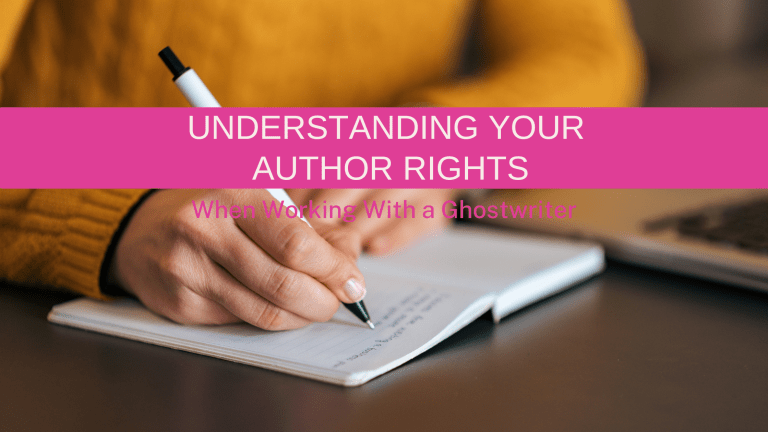How to Write a Business Book – Understanding Your Target Audience
Welcome back to your year of the book! I hope you all had an incredible January, working on your concept development. Maybe you already had it nailed, and enjoyed a month off. Or maybe you slogged it out to develop a basic blueprint. Congratulations, either way! You’re moving right along now.
Now that you have an initial outline for your project, we can move on to the next step of writing a business book. It is time to identify your target audience and expand your outline.
If you’ve just found this series, it’s easy to catch up. Just start with the first article, How to Write a- Business Book (and Get It Published) in 2024.
Why Understanding Your Target Audience Matters
Analysing your market and target audience may not sound like riveting stuff. But it’s vital if you want anyone to read your book. (And why spend 12 months working on this if nobody but your mother is going to open it!)
Understanding your target will guide you through the writing process, as you can imagine the typical reader on the other end. You will be able to tailor your content and advice to them. It will also be handy when it comes time to market your book.
Once you know exactly who you are writing for, you can then review and expand your outline. This will ensure your chosen angle is what your target audience needs and wants. It will also make the writing process smoother when you put pen to paper next month.
How to Write a Business Book – Understanding Your Target Audience
This month we will take a two-pronged approach to the next step of writing a business book:
- Identifying your target audience
- Expanding your outline
Identifying your target audience
Brainstorm potential target markets.
A key part of figuring out how to write a book is identifying who is going to read it (in other words, understanding your target audience). Start by thinking about your current clients and write down a list of all the segments you think may be interested in your book’s concept. Work backwards and narrow it down to one key primary market.
You can also take note of secondary markets. These are groups who would find your book interesting but may not the main demographic. For example, if you’re writing about property investment, your main target audience might be double income earners, while your secondary target audience might be first home buyers.
Dive deeper on your chosen target market.
Research here is key. You will need to know everything about your primary target market. Who are they? How old are they? What jobs do they have? What are they interested in? Think about their values and missions? And consider what don’t they know? And what they do.
Writing your business book comes down to knowing exactly who you are writing it for. If you don’t know this, you won’t know how to provide them with valuable and interesting insights. And if you can’t do that, there’s no point in writing it at all.
Analyse applicable market trends.
What other books already exist in this space? Where is your target market currently going to for their information? Analysing your competition will help you to identify similar books’ strengths and weaknesses, and the niche gap where your book can offer more.
Explore problems they may have.
This is an extension of Step 2 above. You will need to brainstorm the kinds of problems that currently exist for this market. Think about the gaps that might exist in your audience’s field of knowledge. What information could help them? Consider life challenges that may exist for this group. What are their needs? what are their fears?
You can use data from your own client database, as well as ABS Census data, Reddit threads and of course social media. There will also be routes that are specific to your industry, and you should mine all the data you can from those places as that will be the most valuable to you.
When it comes to social media, browsing relevant hashtags can help you to identify common problems for your target market. Google Trends and Google Ads may also assist you to find common search terms. You can even pose a simple question to your database on social media and get valuable insights that way. The best thing about social media, is that the problems are current – and the data you’re getting is of the moment.
How could your book solve your target audience’s problem?
Once you’ve nailed down a key problem to be solved, you can work out how to help. Your book needs to connect with your readers to have the impact you want. A business book’s success will depend on its ability to help its readers with an issue that needs solving or provides them with some valuable insight.
If your book benefits your readers in some way, big or small, they’re far more likely to endorse it and recommend it to others. Your aim should be to provide value to your target readers.
Expanding your outline
The next step is to take all your insights and expand your outline to both include those insights, and fill in more information in preparation for the wiring step.
Review your initial outline.
Read your outline from last month. Assess whether it addresses the key problem you’ve identified for your target market. Or perhaps it offers some valuable insight that your readers desire.
Edit your outline, if necessary.
Ultimately, you want your book to bring value to your readers’ lives. It can’t do that if it’s talking about topics they’re not interested in. Don’t be afraid to heavily edit your outline – it is better to do it now rather than later in the writing stage.
Expand your outline based on findings about your target audience.
Now that you’ve clearly identified what you need to offer your readers, you can flesh out your outline. Add in extra detail and notes wherever possible. The more you include in outline form, the easier it will be to write your book.
Cheers on making it this far!
I know, preparation is never that fun. You’ve worked your way through the tedious tasks of how to write a book, and should be proud of yourself.
Understanding your target audience, knowing exactly who they are and what they care about, will help you to offer advice and guidance that is genuinely beneficial. It can also act as a motivating force during the tougher days of writer’s block or distractions. Simply remember who you are doing this for, and how it will benefit their lives.
You will now have an expanded outline that addresses any issues your target market needs help with and offers them content of great value. You are well prepared for writing a successful business book.
And now you’re ready for the next step! It’s time to work on that initial draft – next blog coming in March!








2 Comments